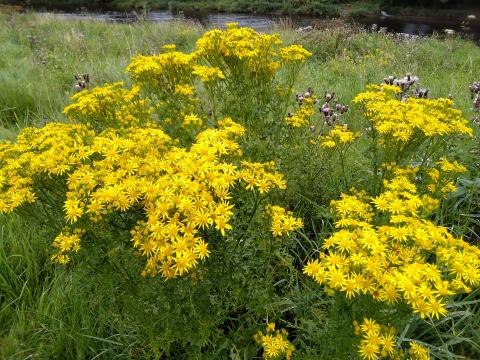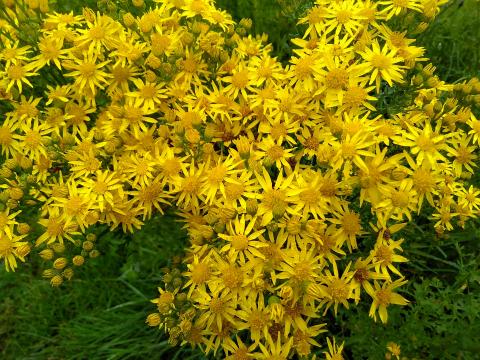Common Ragwort

BE IT ENACTED by the Queen’s most Excellent Majesty, by and with the advice and
consent of the Lords Spiritual and Temporal, and Commons, in this present
Parliament assembled, and by the authority of the same, as follows:—
Control of ragwort
There aren’t many Acts of Parliament that have been passed because of a weed. This is the opening line of the Ragwort Control Act, 2003. If that wasn’t enough, the plant is also one of five specified in the Weeds Act (1959). Why would so attractive a plant warrant so much parliamentary fuss?
Despite its pleasant smell and glorious hue, common ragwort is poisonous to cattle and horses alike. Its presence in silage, hay or dried grass can cause much harm to livestock. By harming our food supplies and agricultural businesses, it harms us. Speaking of the loose woman, another metaphor for attractive-looking poison, Proverbs 23 states:
My son, give me your heart,
And let your eyes observe my ways.
For a harlot is a deep pit,
And a seductress is a narrow well.
She also lies in wait as for a victim,
And increases the unfaithful among men.
Beware of sweet-smelling, eye-pleasing toxins. Not all poisons are to be found in brown bottles with accompanying warning labels. Fewer still have Acts of Parliament proscribing them. I admired ragwort on a recent riverside walk, but I’m not planning to dine on it. Avoid sin, even the pretty ones, for death lurks among the flowers.

- Log in to post comments


 Sunday Worship 10.45am & 6.00pm
Sunday Worship 10.45am & 6.00pm